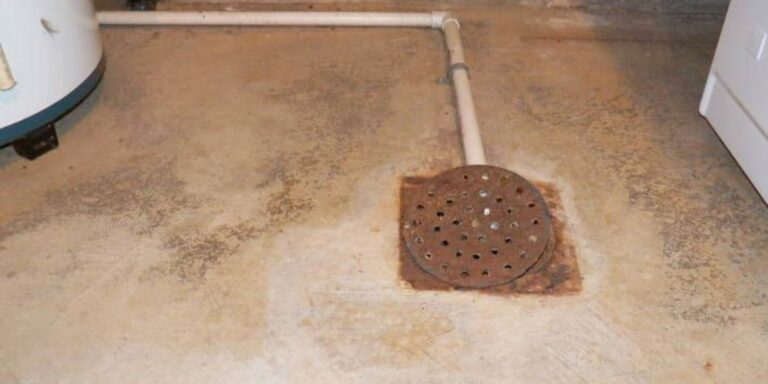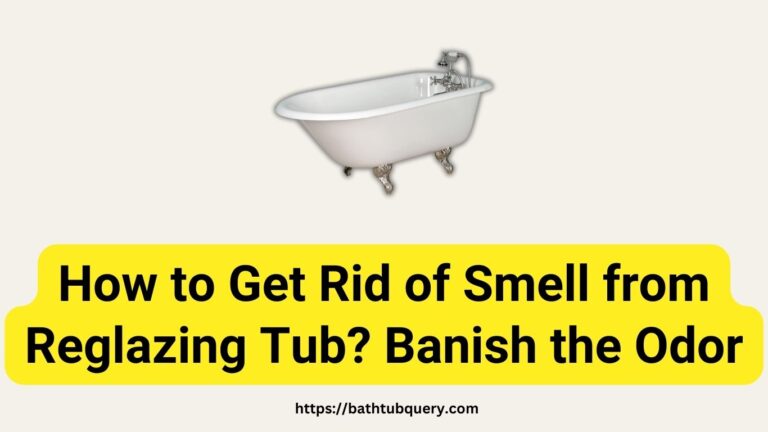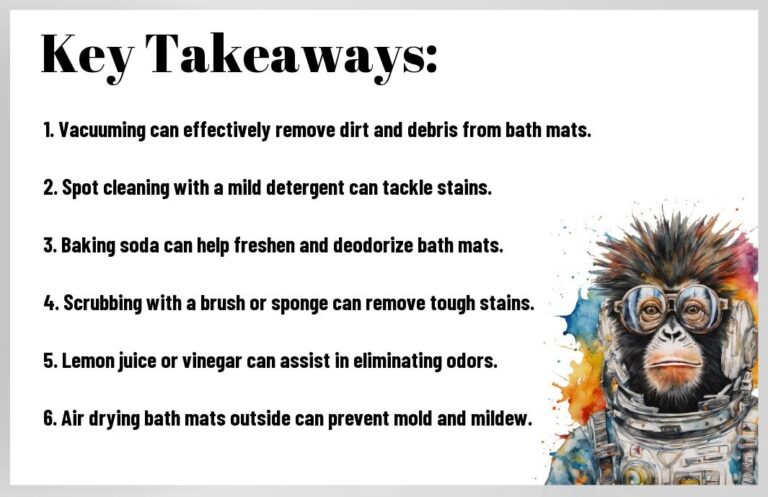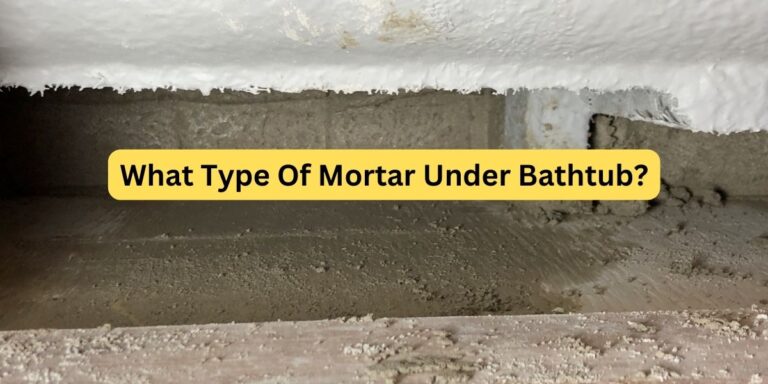What Cleaners Are Safe for Acrylic Tubs?
If you’re a fellow acrylic tub owner, you know the struggle of keeping that shiny surface clean and sparkling. I love the lightweight feel and modern look of my acrylic bathtub, but it can be a real pain to scrub off all the soap scum, dirt, and stains that build up over time.
I’ve tried all kinds of chemical cleaners in the past, and some of them ended up damaging my tub’s finish. Who knew something called an “acid wash” would actually eat away at the acrylic? I had to learn the hard way that I need to use gentler cleaners that are specifically formulated not to harm or scratch the surface.
Through plenty of trial and error, I’ve discovered which cleaners do the job without ruining the acrylic. Let me share what I’ve learned so you can avoid the mistakes I made!
Mild Dish Soap and Water Get the Basic Grime Off
My first go-to for basic cleaning is a mild dish soap mixed with warm water. I know it sounds super basic, but the gentle formula lifts away dirt and oils without being abrasive or harsh.
I mix a small squirt of soap into a bucket or sink of warm water, then use a soft cloth or sponge to wipe down the tub. The soap suds up just enough to cut through any residue. I find circular motions work best to lift up soap scum. Rinsing it all off thoroughly afterward is a must!
Dish soap is safe for frequent use because it’s designed not to strip or erode surfaces. Just don’t use an super-strong “grease-cutting” formula that could be too abrasive. Stick to a basic mild soap and you can’t go wrong.
See this guide: What Not To Use On Acrylic Tubs? 5 Things To Avoid
Vinegar Cuts Through Gunk with Its Acidic Magic

You’ve probably heard that vinegar makes a great natural cleaner. Well, it’s true! The acidic properties of vinegar make it amazing at busting through soap scum and mineral deposits from hard water.
I like to dilute pure white vinegar with water before using it in the tub. Usually, a 1 part vinegar to 3 parts water ratio works well. If I need more heavy-duty cleaning power, I may bump up the vinegar concentration.
Start by testing any vinegar solution on a small, inconspicuous area of the tub to make sure it doesn’t damage the finish. Once you see it’s safe, get scrubbing! The fizzing reaction helps lift away grime.
Vinegar can have a strong smell, so I recommend opening a window for ventilation. It dissipates quickly once everything’s rinsed off. Just don’t get too close and inhale it!
See this guide: Acrylic Bathtub Stains That Won’t Come Out? Here’s How to Remove Them
Baking Soda Lifts Gunk through Gentle Scrubbing
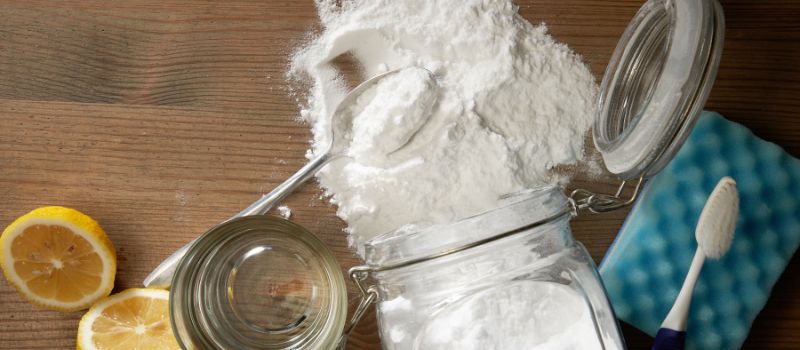
Baking soda is another natural cleaning superstar. Its gritty texture provides a gentle abrasive action to lift away stuck-on dirt and stains. Yet it’s soft enough that it won’t scratch or mar acrylic surfaces.
Sprinkling baking soda directly onto the tub can help absorb and lift greasy residues. But I find it works even better to make a paste by mixing it with a little water first. The paste lets me lightly scrub those really stubborn areas of gunk buildup.
After scrubbing with the baking soda paste, I rinse it all away thoroughly with clean water. Wiping the surface down with a soft cloth also helps remove any baking soda residue.
With this method, I can tackle soap scum and hard water stains without damaging the tub’s finish. Baking soda is cheap and non-toxic too. This is definitely one of my top acrylic tub cleaning tips!
Hydrogen Peroxide Whitens with its Oxidizing Formula
Here’s a cleaning ingredient that does double duty: hydrogen peroxide. Not only does its bubbling reaction help remove soap scum and mineral stains, but it has natural whitening abilities too.
You can find hydrogen peroxide in most medicine cabinets, sold as a mild antiseptic for cuts and scrapes. Turns out that the same oxidizing formula that disinfects wounds also breaks down grime buildup.
Start by diluting a regular 3% hydrogen peroxide solution with equal parts water. I’d recommend testing it first in an inconspicuous tub area just to be sure it won’t damage the finish.
If all’s good, go ahead and apply it to any stained areas. Let it sit and fizz for a few minutes before wiping or rinsing away. For extra whitening power, try spraying it on and letting it sit overnight before rinsing.
Be sure to use hydrogen peroxide in a well-ventilated area and avoid inhaling the fumes. This stuff really works wonders though on soap scummy tubs!
Only Use Ammonia when Highly Diluted – This Stuff is Potent!
Now on to the stronger chemicals – proceed with major caution here!
Ammonia-based cleaners are incredibly effective on really dirty and stained tubs. But they can also damage acrylic surfaces if used incorrectly.
The only time I attempt ammonia is for some seriously stubborn gunk that won’t budge otherwise. Even then, I dilute it down big time. We’re talking just 1 tablespoon of ammonia for every gallon of water.
Be sure to test this uber-diluted ammonia solution on a small patch first to make sure it’s safe for your tub. Still go slowly and carefully, wearing gloves and keeping the bathroom ventilated. Never mix ammonia with other cleaners containing bleach or acids.
While ammonia has excellent cleaning power, it has downsides like its very strong odor. This is definitely a last resort for only the toughest cleaning challenges. Make sure you follow all safety precautions when attempting it.
Steer Clear of Abrasive Cleaners that Scratch
Now that we’ve covered various cleaning solutions, let’s talk about what not to use on acrylic. Basically, anything even slightly abrasive is a no-go.
Scouring powders, stiff scrub brushes, and cleaning solvents can all scratch or dull the smooth tub surface. Then you’ve got even more problems trying to repair or restore it.
Look at the product labels and avoid anything with terms like “scouring,” “scratch-free,” or “solvent” on it. Stick to soft sponges and microfiber cloths only!
Once acrylic gets scratched or etched, it becomes even more prone to damage. So avoiding those abrasives up front is key to keeping your tub looking pristine.
Rinse and Dry Completely After Each Bath
Here’s a super easy cleaning habit that prevents tons of cleaning work down the line: rinsing and drying your tub thoroughly after each use.
Giving the tub walls a quick rinse prevents soap scum from accumulating. It only takes a minute with the shower sprayer to sluice away any residue.
Following up with a squeaky clean dry also helps. I always wipe down the tub with a towel and use a squeegee on the bottom surface. This prevents water spots and mineral build up.
Getting in the habit of a quick rinse and dry makes a huge difference. I hardly have to scrub at all if I stay on top of it daily. Preventative care is so much easier than dealing with layers of gunk!
Add Some Shine Back with an Occasional Wax
To keep my acrylic tub looking its best, I make sure to wax it every month or two. Wax helps seal the porous acrylic surface to prevent dulling and water spotting.
You can find car and boat wax formulated especially for use on fiberglass and acrylic. I apply a thin layer using a soft cloth and let it dry to a hazy finish. Then I buff it out with a microfiber towel for a beautiful, glossy shine.
Waxing also protects the surface from minor scratches and scuffs. The sealant makes it easier to wipe away dirt and grime before it has a chance to build up. My tub looks brand new again after waxing!
Clean Safely for a Sparkling Acrylic Tub
There you have my top tips and tricks for safely cleaning acrylic bathtubs without damaging the finish. To recap, stick to mild cleaners like dish soap, vinegar, baking soda, and diluted hydrogen peroxide for daily use.
Avoid anything abrasive or harsh. Simple habits like rinsing and drying after bathing keep gunk at bay. An occasional wax protects the finish beautifully.
Follow this advice, and you’ll keep your acrylic tub looking like new for years to come! With the right gentle cleaners like Magic cleaner and methods, you can banish soap scum buildup for good.
I hope these acrylic tub cleaning tips help you out. Let me know if you have any of your own tricks to add! I’m always looking to learn new ways to care for my tub and keep it clean with minimal effort. Together let’s get every acrylic surface sparkling.

William J. Bullock is a licensed plumber with over 15 years of experience installing and repairing bathtubs. He runs his own plumbing company in Greenville and serves residential and commercial clients. William is dedicated to providing honest, transparent advice to help homeowners make informed decisions about their bathroom renovations.
He has established expertise in selecting bathtubs, planning custom installations, diagnosing issues, and completing repairs. William aims to share practical tips and reliable recommendations based on extensive hands-on work. When he isn’t on a job site, William enjoys spending time with his family and volunteering at local community events. He takes pride in delivering quality service and enjoys helping people upgrade their homes.



